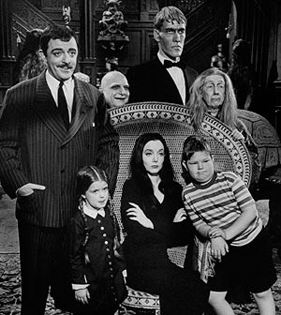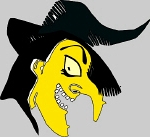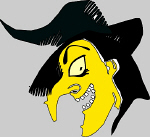|

DO YOU REMEMBER... THE
MUNSTERS & THE ADDAMS FAMILY
| THE MUNSTERS
The Munsters was a 1960s TV sitcom depicting the home life of a family of monsters. It starred Fred Gwynne as Herman Munster and Yvonne De Carlo as his wife, Lily Munster. The series was a satire of both traditional monster movies and popular family entertainment of the era, such as Leave It to Beaver. It ran concurrently with The Addams Family. Although the Addamses were well-to-do, the Munsters were a more blue-collar family.
The series aired at night once a week in black-and-white on the CBS Television Network from September 24, 1964 to May 12, 1966, for 70 episodes. It was canceled after ratings dropped. |
THE ADDAMS
FAMILY
The Addams Family is a group of fictional characters created by American cartoonist Charles Addams. Addams Family characters include Gomez, Morticia, Uncle Fester, Lurch, Grandmama, Wednesday and
Pugsley. The Addamses are a satirical inversion of the ideal American family; an eccentric, wealthy clan who delight in the macabre and are unaware that people find them bizarre or frightening. They originally appeared as a series of single panel cartoons, published in The New Yorker between 1938 and Addams's 1988 death. They have since been adapted to other media, including television series, films, video games, and a musical. |
 |
To View And/Or
Print My First Issue From October, 1991
Click
Here |
|
DEVILS NIGHT: PASS THE SOAP AND
RUN, BABY!
An excerpt from “Michael, Michael, Michael:
Confessions of an Outrageous, Contagious Klutz”
By Mike McCarty
As I walked along in the middle of the street in the cool, night air, I had a double reason for having ignored the “you’d better be home when the street lights go on – or else” rule. First, I was a newly minted teenager. Second, this was Devil’s Night in Detroit.
Don’t get the wrong idea. In the early ’60s, kids gathered in the deep darkness of the night before Halloween to soap a few windows and perform a few other harmless pranks. Not like Detroit’s nationally known Devil’s Night “holidays” of the ’90s, when Motor City miscreants graduated from “flaming poop” on the porch to burning buildings and torching abandoned houses.
|

|
On this night, I was strolling in the middle of Sussex Avenue, a block from my house, chatting with a few friends about the usual. Nothing or next to nothing. Oh, maybe we talked logistics. Such as how many more streets we wanted to hit and whether we had enough soap to last us. And when we should ditch our little brothers and their pesky friends, all of them light years beneath our level of sophistication (except when we needed them to fill out a baseball team). As we walked and talked, a few of the younger kids with us darted up to houses and smeared a bar of soap on large, living-room windows.
Suddenly, we were startled by a storm door banging open, springing an angry homeowner who leaped off his porch and jumped over his bushes in full stride. The foot chase was on! It was like a hungry tiger pursuing a herd of frightened wildebeasts on Mutual of Omaha’s “Wild Kingdom.” One by one, bug-eyed kids peeled off and vanished into the night. The snorting man was closing in on the remainder of the herd, which – as I soon discovered when I glanced behind – consisted of just me. |
I veered off into a dark lot between two houses and promptly turned my ankle on the side of a rock or something sticking up out of the ground. Maybe a hand reaching up from a grave? (Hey, consider the ghostly holiday and the cumulative volume of Saturday afternoon horror double features I saw at the local Atlas Theater over the years.) I fell to the dirt of someone’s garden, half-crawled to a chain-link fence, climbed up and fell over into an alley, where I turtled up. Not a muscle moved. Hmmmm. Dark clothes, dark night, no streetlights nearby. Maybe the guy wouldn’t notice me. Unable to look, I held my breath as I heard the predator come up to the fence, breathing heavily just a few feet from me. Trying to get a whiff of his prey. Or see some shadowy movement. And pounce. I waited. Waited. And waited some more. Finally, I heard footsteps, again. They left the fence and faded away. It worked! I waited a few extra moments just to be sure I was in the clear, then, at last, I exhaled, picked myself up and limped to find my friends. Later, I hobbled home, where my story was received in the usual way: “Michael, Michael, Michael.” And, a day later, I received a leg cast for my broken ankle.
That plaster cast should have served notice. Perhaps there is a “klutz” gene that runs in the family. After all, my Uncle Eddie (Dad’s brother) also hurt himself on Halloween or Devil’s Night. As a kid, Eddie threw a stink bomb into a tavern, giggled and was hit by a car while making his getaway dash across a street. Everybody recovered – the bar patrons from the stench, and Eddie from his bruises.
THIS SATURDAY NIGHT AT THE
BEAUTIFUL AIR-CONDITIONED COBO ARENA...
|
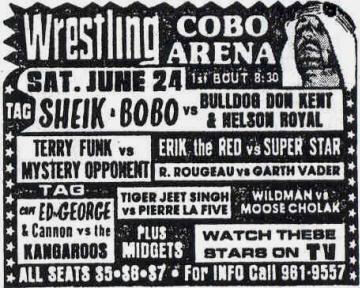
|
To a fan of pro wrestling in Detroit, Michigan, that statement was the call, usually issued by host Lord Athol
Layton, on the Big Time Wrestling television program that aired twice (and sometimes, three times) a week. Each sixty
minute program focused on one thing –getting the local pro wrestling enthusiasts downtown to the ‘House the Sheik
built;’ the Cobo, for another three hours of athletics and in-ring drama.
From the mid-1960s to the late 1970s, the Motor City was a true hotbed of pro wrestling action. Nearly every top
pro wrestling star passed through the ring ropes at the Cobo Arena. National magazines, which had often catered to
and focused on the east and west coast, paid a lot of attention to Detroit.
World Wide Sports, Inc. was the corporate entity behind Big Time Wrestling. The biggest star of the era was, of
course, The Sheik - Ed Farhat, who happened to own and operate the wrestling promotion. |
The Sheik was the most unconventional
of all in a sport filled with unconventional characters. He was
considered the greatest heel in modern professional wrestling;
consequently, wrestling fans could not wait to see him defeated...
and the huge crowds at
Cobo Arena attested to the remarkable drawing ability he
possessed.
|
Although The Sheik was the main draw on most Cobo shows, the “who’s who” of wrestling stars that appeared
included numerous other top stars of the era – local and otherwise. Bobo Brazil, Fred and Bull Curry, Pampero
Firpo,
Killer Brooks, Tony Marino, Haystacks Calhoun, Tex McKenzie, Johnny Valentine and others frequented the squared
circle under the banner of the National Wrestling Alliance (NWA). Huge crowds attended, paying $6.00 for a ringside
seat to see their favorites in action.
In 1971, a rival promotion opened at Detroit’s Olympia Stadium. “All Star Championship Wrestling” featured
stars from the Indianapolis-based World Wrestling Association (WWA). The top headliner for this group was Dick the
Bruiser, who in years earlier had become a huge Detroit star. Bruiser (William ‘Dick’
Afflis) not only was the promotion’s
top star, he was co-owner, with another midwest favorite, Wilbur Snyder. Top wrestlers with this organization
were Baron Von Raschke, Bobby Heenan, Blackjacks Lanza and Mulligan, The Crusher, Mitsu Arakawa, Cowboy Bob
Ellis, Ox Baker, Sailor Art Thomas, The Valiant Brothers and others. Over time, some of the established
Cobo-based
wrestlers jumped to the WWA promotion –The Kangaroos, Luis Martinez, and Ernie Ladd being notables.
|
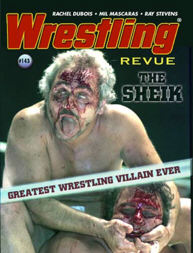
|
Not to be outdone by the infusion of competition, the Cobo promotion pulled out all the stops by flying in top
box office stars from other NWA promotions to compete directly with the cards being offered at the Olympia. Thus,
Detroit wrestling fans were treated to a smorgasbord of top-name talent on a regular basis throughout the early 1970s.
In 1974, the wrestling war ended with The Sheik, as usual, coming out on top. The resulting “Sheik vs. Dick the
Bruiser” series of matches were among the most anticipated and bloody bouts ever seen in a Detroit wrestling ring.
Top stars continued to appear at the Cobo Arena. Abdullah the Butcher, Dory and Terry Funk, Gino Hernandez,
Mark Lewin, Dusty Rhodes, Ripper Collins and countless others continued to provide plenty of action for Motownbased
wrestling fans. However, as time went on, the crowds began to dwindle.
The reasons for the demise of wrestling in Detroit can be attributed to several factors; among them, a nationwide
recession that severely impacted Detroit’s economy at the time; a series of ‘no-shows’ (advertised wrestlers who did
not appear); and fans were just tired of the Sheik’s match formula, having seen it for over a decade.
Wrestling crowds had become so small that the cards were moved from the Cobo (by this time, the new Joe Louis
Arena was built and some shows were run there), to the dilapidated Michigan State Fairgrounds Coliseum, and eventually
to the suburban Lincoln Park Community Center. In 1980, it was an end to an era as the promotion closed.
This book is a pictorial look back at the greatest era of pro wrestling in Detroit. You won’t find match results,
wrestler’s real identities or behind-the-scenes stories here. Rather, a straight remembrance through photos of a remarkable
time, sadly, an era that will never be repeated.
Most of the photos in this book were taken by myself and other well-known Detroit wrestling photographers
Gary J. Kamensack, Gary A. Mancuso, Brad McFarlin. Several are from the Wrestling Revue Archives. By no means is
this a complete reference work to everybody who has wrestled in Detroit during the 1965-80 era. Rather, it is a look
back at the top stars, tag teams, girls, managers, and announcers. While not everybody is included, I’ve attempted to
present the true flavor of an era that will never be repeated.
This book is dedicated to not only the wrestlers and personalities pictured here. It is a tribute to men like Ron ‘The
Rebel’ Sanders, Al Barr, Chico Garcia, Jim Lancaster, Ron
Martinelli, Mike Wayne, and the many others who like so
many of us, made it a point to be at the Cobo “This Saturday Night!”
-Brian A. Bukantis
|
A
METRO PHOTO BLAST
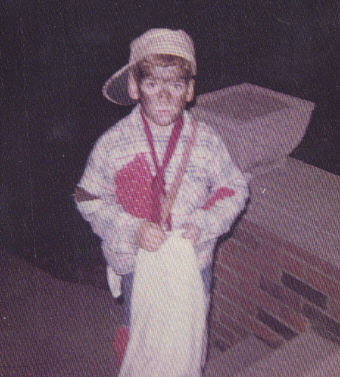
The Editor (Halloween 1965)
|

GUESS THE
YEAR OF THESE SONGS
|
| . |
|
Nightmare on My Street - Will Smith
Sweet Child O' Mine - Guns N' Roses
Simply Irresistible - Robert Palmer
The Loco-Motion - Kylie Minogue
Don't Worry, Be Happy - Bobby McFerrin |
|
|
NAME OUR CARTOON CHARACTER
.
|
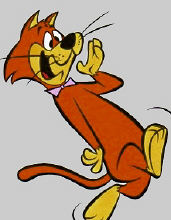
|
Name this
popular cartoon character from past or present?
|
|
VAVOOM
From the
cartoon Felix The Cat
.
Congratulations
To:
. |
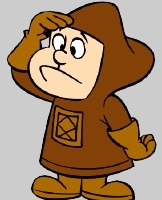
|
|
Vavoom is the lovable little character who's voice is so loud it can knock over trees, houses, and even mountains! With his one-word vocabulary,
"VAVOOM!", he often wreaks havoc without realizing it. But he also uses it on purpose to get his pal Felix The Cat and himself out of tight situations.
|
|
.
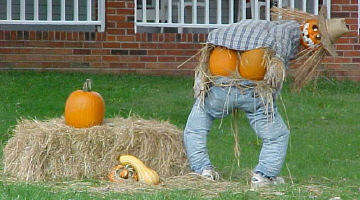 |
|
|
|
Look forward to receiving our
monthly mailer, plus advance notice of all the latest news, podcasts, and special events.
|
|
|

